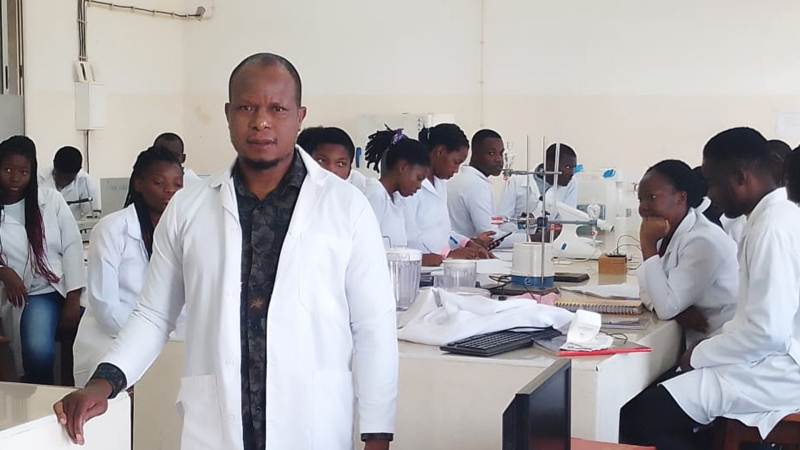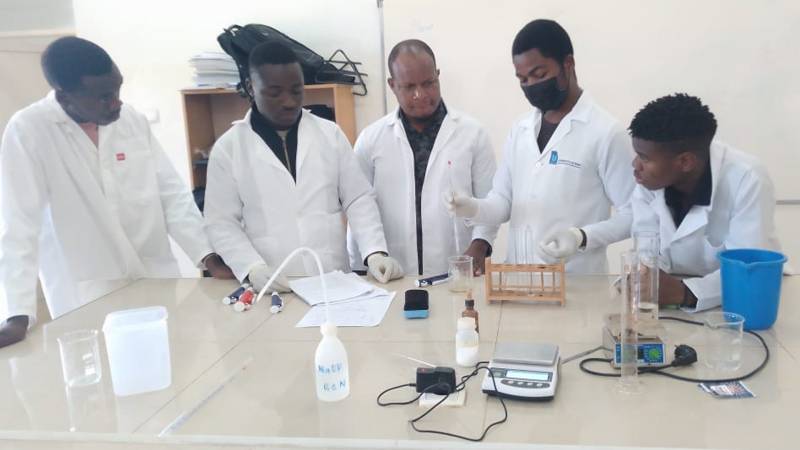Inexpensive materials are an important component of research, especially in low-income countries like Mozambique, where the gross domestic expenditure on R&D is a very low percentage of the gross domestic product.
Afonso Filipe João, an electrochemist of Mozambique, is refining a technology called 3D printing to produce low-cost sensors and analytical equipment for the detection of environmental and food contaminants. Using his skills to serve his country has been his goal since his youth. Now he wants to promote the use of this technology, and, through his example, serve as a source of inspiration for future generations of scientists.

João's ambition took shape when he received a CNPq-TWAS fellowship, which enabled him to earn a PhD in electroanalytical chemistry (2018–2021) at the Federal University of Uberlandia (UFU), in Brazil. Soon afterward, he spent six months at UFU with a postdoctoral position, further specializing in the same field. Now, he is the head of the Research, Editing, and Publication department at Púnguè University, in his native Mozambique.
CNPq is the Brazilian National Council for Scientific and Technological Development, a long-standing TWAS partner and fellowship supporter.
"This PhD fellowship truly allowed me to evolve as a scientist, and use my skills to benefit the environment, and my people," João said. "Now I can run more precise electrochemical analyses to spot contaminants in food and beverages."
How does 3D printing help the environment?
João developed a passion for electrochemistry when he took a degree in chemistry at Eduardo Mondlane University (2008) in Maputo, Mozambique. At the time, he wanted to detect contaminants in the environment, but had to cope with the lack of equipment. Those constraints, however, turned out to be useful, because they inspired him to use common, cheap materials to teach students the basis of chemistry.

"We used glass as magnifier, tablespoons as lab spatulas, and other low-cost tools for simple lab purposes, to show the students basic reactions. But the results were not the best possible," he recalled.
The turning point came when he specialised in 3D printing, a technique that creates three-dimensional objects by layering materials such as acrylic resins using a computer programme. Through this process, he succeeded in producing low-cost, easy-to-carry sensors for electrochemical analyses of environmental and pharmaceutical samples.
3D printing is a very eco-friendly technique, João said. Traditional manufacturing methods require cutting, shaping, and carving the materials, producing considerable waste. 3D printing, on the contrary, shapes objects layer after layer, using only the needed amount of materials, he explained. "With minimal or no leftover to discard, the environmental impact is reduced," he observed.
Sensors built with this technology are equally precise as those built with traditional techniques, the scientist explained, and in the case of printing mistakes, the material can be recycled and reused. In addition, the technique facilitates the crafting of lighter complex objects with irregular surfaces, and saves energy compared to the standard manufacturing techniques, leading to lower carbon emissions.
The uses of 3D printing
"I started producing sensors for electrochemical analyses with different applications, including investigative and legal purposes," he said. These sensors, in fact, can help detect traces of explosives, gunshot residues, and illicit drugs.
One of the analyses that he carried out involved measuring atropine levels in beverages. Although atropine is typically used as an analgesic or sedative drug, there are instances where criminals exploit its use by poisoning beverages.
João developed 3D-printed electrodes using a combination of graphene and polylactic acid, and tested them on white wine, vodka, whisky, and energy drinks, obtaining a positive analytical response to atropine. "We proved that 3D-printed materials are an interesting alternative to traditional sensors," the scientist said. "And the great value is that they can be tailored for on-site determination of forensic targets in any beverage samples."
On the health and environmental side, João used a tailor-made 3D-printed electrode to spot a common anti-inflammatory drug called naproxen from urine samples, and in the environment. Doctors prescribe naproxen for pain, fever, and other conditions. After administration, this substance is metabolized and eliminated with the urine that, in turn, is discharged through wastewater.
"Naproxen is not only becoming a problem of public health, because of its overuse and the potential kidney and gastrointestinal side-effects it causes," said the scientist. "Experts say it is turning into an emerging environmental pollutant, because increasingly higher concentrations are detected in aquatic environments."
The future of Mozambique science
João has a clear picture of his future: he wants to advance science in Mozambique and nurture young talents. At present, he supervises a group of seven students, three of whom have already graduated. "I'd like to have my own lab soon because I want to contribute to the scientific growth in my country," he said.
He is also interested in applying his skills to the design of new materials, sensors, and batteries, and to strengthen the collaboration between Brazil and Mozambique. To this end, he has promoted and coordinated five bilateral scientific events to engage young students in both countries by showcasing the relevance of scientific innovations in economic growth.
Cristina Serra

